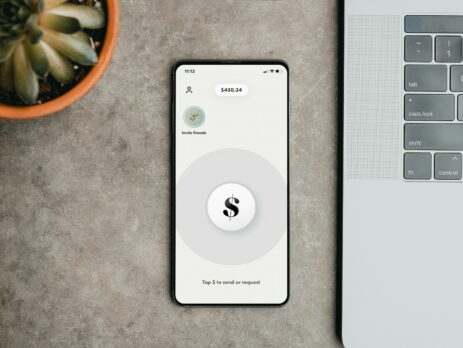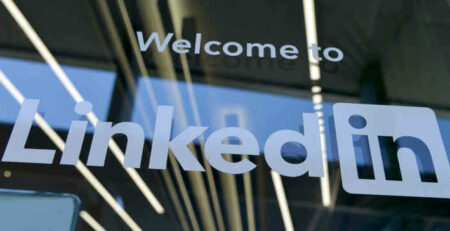Strategies for Boosting Your Graphic Designer Income
Graphic design is not just an art; it’s a lucrative profession that blends creativity with technology. In today’s digital age, the demand for skilled graphic designers is soaring, as businesses across all sectors require effective visual communication to engage their audiences. However, the journey to achieving a substantial income in graphic design requires more than just talent and creativity. It involves strategic planning, continuous learning, and adaptability to the evolving market demands.
One of the primary steps towards boosting your income as a graphic designer is to diversify your skill set. The field of graphic design is vast, encompassing everything from web design and branding to animation and user interface design. By mastering multiple areas of graphic design, you can offer more services to your clients, increasing your marketability and potential income.
Networking is another crucial element. Building a strong professional network can open doors to new opportunities and clients. Platforms like Behance and Dribbble are not just places to showcase your work; they are also communities where you can connect with other designers and potential clients. Engaging actively on these platforms can significantly enhance your visibility in the design community.
Understanding the business side of graphic design is equally important. Many graphic designers are not just artists; they are also entrepreneurs. This means knowing how to market your services, manage projects, and negotiate contracts. Skills in these areas can dramatically increase your professional value and income potential.
Another strategy is to keep up with industry trends and technologies. The graphic design industry is continually evolving, with new tools and technologies emerging regularly. Staying updated with these changes and incorporating them into your work can set you apart from competitors and make you more attractive to clients looking for innovative design solutions.
Specialization can also be a key to higher earnings. While being a jack-of-all-trades can be beneficial, specializing in a niche area, such as UX/UI design or motion graphics, can make you an expert in that field. This expertise can command higher rates due to the specialized skills and knowledge required.
Freelancing and remote work have opened global opportunities for graphic designers. Platforms like how to market yourself as a freelancer provide insights on navigating the freelance market, which can be particularly lucrative if managed well. The ability to work with international clients removes geographical income limitations, potentially increasing your earnings.
Educational advancement is another avenue for income growth. Attending workshops, taking online courses, and even pursuing higher education in graphic design or a related field can refine your skills and qualify you for higher-paying projects and positions.
Offering teaching or consultancy services can also enhance your income. Many experienced designers find that sharing their knowledge through workshops, online courses, or YouTube tutorials not only helps others but also provides an additional income stream.
Finally, developing passive income streams, such as selling digital templates, stock graphics, or eBooks on design, can provide ongoing income without the constant need for active work. This approach can help stabilize your income as a graphic designer, making financial planning easier.
By implementing these strategies, graphic designers can not only enhance their skills and reputation but also significantly increase their earning potential. The key is to remain adaptable, continuously seek new knowledge, and apply business acumen to your creative skills.

What are the most effective ways to market yourself as a graphic designer?
Marketing yourself effectively as a graphic designer is crucial in a competitive industry. Building a strong personal brand and online presence is the first step. This involves creating a professional portfolio that showcases your best work. Additionally, maintaining an active blog or social media presence where you share insights and updates about your design process can attract a broader audience.
Networking is also a vital component of marketing yourself. Attending industry conferences, participating in design competitions, and joining local design communities can help you connect with other professionals and potential clients. Online webinars and virtual meetups offer additional networking opportunities, especially in today’s digital-first world.
Utilizing testimonials and case studies from past clients can significantly boost your credibility. These elements demonstrate your ability to deliver quality work and achieve client satisfaction, making potential clients more likely to trust and hire you. For more on leveraging client feedback, see customer testimonials.
Email marketing is another effective tool. By building an email list and sending out regular newsletters that provide value, such as tips on design trends or special offers on your services, you can keep your audience engaged and encourage direct inquiries.
Offering free resources, like downloadable design templates or insightful eBooks, can also help in attracting potential clients. These resources can serve as a lead magnet, drawing users to your website and establishing your expertise in the field.
Collaborations with other creatives or businesses can expand your reach. Whether it’s a joint project, a guest post on a popular blog, or a social media collaboration, partnerships can introduce your work to new audiences.
Speaking engagements and workshops not only position you as an expert but also increase your visibility. Whether it’s in-person or virtual, teaching others about graphic design can lead to new professional opportunities.
Investing in search engine optimization (SEO) for your website can help you reach clients who are searching for graphic design services online. Optimizing your site with relevant keywords, engaging content, and a portfolio can attract more organic traffic.
Paid advertising, such as Google Ads or social media ads, can also be effective, especially when targeted at the right audience. These ads can increase visibility quickly, although they require financial investment.
Finally, asking for referrals from existing clients can lead to new business opportunities. Satisfied clients are often happy to refer others if they are confident in your services, so don’t hesitate to ask for referrals after successfully completing a project.
How can specializing in a niche increase your graphic design income?
Specializing in a specific niche within graphic design can significantly boost your income by setting you apart from generalists in the field. When you specialize, you become an expert in a particular area, which can lead to higher demand for your services and the ability to charge premium rates. For instance, becoming an expert in UX/UI design or motion graphics, which are highly sought after skills, can make you indispensable to tech companies and digital agencies.
Specialization allows for deeper knowledge and more efficient work within your chosen niche, leading to better quality outputs that satisfy and exceed client expectations. This expertise can result in a stronger portfolio that attracts more clients and projects.
By focusing on a specific market, you can tailor your marketing efforts to a targeted audience, making your advertising more effective and cost-efficient. This focused approach helps in building a stronger brand identity, making it easier for potential clients to remember and recognize your services.
Specializing also reduces competition. Instead of competing with every graphic designer, you only compete within your niche. This smaller competitive field can lead to more opportunities and less price undercutting, stabilizing your income.
Experts in a niche can also leverage their authority to create additional income streams such as teaching, writing books, or conducting workshops specifically related to their area of expertise. These activities not only boost income but also reinforce your status as an expert.
Networking within a niche is often more straightforward as you can target specific events and online communities where potential clients and collaborators are present. This focused networking is generally more productive than broader approaches.
Client retention is often higher in specialized areas. When clients find a designer who excels in the specific service they need, they are more likely to form long-term partnerships, providing a steady income stream.
Specialization can also lead to passive income opportunities. For example, a designer specializing in icon design can sell sets of icons on various marketplaces, generating income without active work.
Being an expert in a niche can attract opportunities for collaboration on larger projects led by big companies or top-tier design agencies that seek specific skills and knowledge.
Finally, specializing can lead to speaking engagements and features in publications, further establishing your reputation and leading to more high-profile projects and better rates.
What role does networking play in boosting a graphic designer’s income?
Networking is a powerful tool for graphic designers looking to boost their income. It provides opportunities to connect with potential clients, learn from peers, and gain insights into industry trends and demands. Effective networking can open doors to collaborations, freelance gigs, and even full-time positions that might not be advertised publicly.
Attending industry conferences, workshops, and seminars is a traditional yet effective way to meet other professionals in the graphic design field. These events often attract a diverse group of people from various sectors, providing a broad network of potential client leads and professional contacts.
Online platforms like LinkedIn, Behance, and Dribbble are essential for digital networking. Regularly updating your profile, posting recent work, and engaging with other users’ content can increase your visibility and attract connections who might offer job opportunities.
Joining professional associations can also be beneficial. These organizations often provide members with resources, job boards, and networking events specifically tailored to the graphic design community.
Collaborating with other creatives can lead to new projects and clients. For instance, working with photographers, writers, and web developers can help you offer a full package to clients, increasing your service value.
Referrals from existing clients are incredibly valuable. Satisfied clients who recommend your services to others can significantly boost your income without the need for active marketing.
Teaching and speaking at events can also expand your network. These activities position you as an expert in your field and increase your exposure to potential clients and collaborators.
Volunteering your design services for causes you care about can help you meet like-minded professionals and add meaningful projects to your portfolio, which can attract clients who share similar values.
Maintaining relationships with past clients and colleagues is crucial. Regular check-ins can lead to repeat business and new opportunities through their extended networks.
Finally, being active in online forums and groups related to graphic design can help you build relationships with global peers, providing insights into international markets and expanding your potential client base.
How important is continuous learning and staying updated with new tools for a graphic designer?
Continuous learning is crucial in the field of graphic design, where trends and technologies evolve rapidly. Staying updated with the latest design tools and software not only enhances your efficiency but also ensures that your work remains relevant and competitive in a fast-paced industry.
Learning new skills can open up additional revenue streams. For instance, a graphic designer who learns web development or video editing can offer these services alongside traditional design work, appealing to a broader range of clients.
Participating in workshops and online courses can help you stay ahead of industry trends. These educational opportunities provide insights into emerging design styles and techniques, which you can incorporate into your projects to keep your work innovative.
Subscribing to design blogs, magazines, and following thought leaders on social media can also be a valuable source of continuous learning. These resources often discuss the latest design tools and case studies, providing practical insights that can be applied to your work.
Attending industry conferences not only aids in networking but also offers workshops and sessions about the latest tools and technologies in graphic design. These learning opportunities can be pivotal in staying knowledgeable and relevant.
Experimenting with new tools and software can lead to unique design solutions that set your work apart. This can be particularly appealing to clients looking for innovative and original designs.
Continuous learning also contributes to personal development, keeping you engaged and passionate about your work. This intrinsic motivation can lead to higher quality work and greater job satisfaction.
Many online platforms offer certifications in new tools and technologies. Obtaining these certifications can bolster your resume and reassure potential clients of your expertise and commitment to the field.
Sharing your knowledge with others can also reinforce your learning. Writing blogs, conducting workshops, or speaking at events about what you have learned can consolidate your knowledge and establish you as a thought leader in the graphic design community.
Finally, learning about related fields such as marketing, psychology, and business can provide a broader perspective on how design influences various aspects of commerce and user engagement, making your work more impactful and valuable to clients.
What are the benefits of freelancing and remote work for graphic designers?
Freelancing and remote work offer numerous benefits for graphic designers, including flexibility, a broader client base, and often, a better work-life balance. These modes of work allow designers to choose their projects and work hours, providing a level of autonomy that is rarely possible in traditional employment settings.
The ability to work from anywhere as a freelancer or remote worker opens up a global market. Graphic designers can accept clients from around the world, which not only diversifies their work experience but also potentially increases their income by tapping into markets with higher pay rates.
Freelancing can lead to a more varied portfolio. Working on a wide range of projects for different clients helps in building a comprehensive portfolio that showcases versatility, attracting even more clients.
Remote work and freelancing can reduce job-related expenses such as commuting and wardrobe costs, and in some cases, tax deductions can be claimed for home office expenses, further increasing financial benefits.
The flexibility of freelancing allows designers to allocate time for continuous learning and personal projects, which can enhance skills and lead to personal and professional growth.
Freelancers have the freedom to set their own rates based on their expertise and the project’s demands, which can lead to higher earnings compared to fixed salaries in traditional roles.
Working independently encourages the development of entrepreneurial skills such as negotiation, client communication, and time management, making freelancers more versatile and capable professionals.
Remote work environments often lead to fewer interruptions and lower stress levels, increasing productivity and job satisfaction for many individuals.
Freelancing provides opportunities to work on passion projects or collaborate with peers in ways that might not be possible in a traditional job, leading to more creative fulfillment and professional satisfaction.
Finally, the freelance and remote work model can offer a better balance between personal life and work commitments, contributing to overall well-being and happiness.
How can graphic designers create passive income streams?
Creating passive income streams is a strategic way for graphic designers to boost their earnings and achieve financial stability. One popular method is selling digital products, such as templates, fonts, and graphics, on platforms like Etsy or Creative Market. These products can be sold repeatedly without additional work after the initial creation.
Stock photography and design sites offer another avenue for passive income. Designers can upload their original photos and designs to these sites, earning a commission each time their work is downloaded.
Creating online courses or tutorials on graphic design can also generate passive income. Platforms like Udemy or Skillshare allow designers to create video courses that earn money every time a new student enrolls.
Writing eBooks or guides on design topics is another way to create a passive income stream. These digital books can be sold on your website or through online retailers like Amazon.
Offering a subscription service, such as a monthly graphics package or newsletter, can provide a steady income from subscribers who pay a recurring fee for new content.
Licensing your designs for use on products like t-shirts, mugs, or posters can generate royalties each time a product is sold with your design.
Participating in affiliate marketing by promoting design-related products or services on your blog or social media channels can earn you a commission for each sale made through your referral links.
Developing an app or a tool for graphic designers can provide ongoing income if it becomes popular within the community.
Creating and selling design assets to other designers, such as unique brushes for Photoshop or custom presets for Lightroom, can also be a lucrative passive income source.
Finally, monetizing a YouTube channel by creating content related to graphic design can generate income through ad revenue, sponsorships, and affiliate marketing.
What business skills are essential for graphic designers to increase their income?
For graphic designers, possessing strong business skills is as crucial as having creative talent. Understanding the basics of business can significantly enhance a designer’s ability to attract and retain clients, manage projects efficiently, and ultimately increase income.
Negotiation skills are vital for securing favorable contract terms and rates with clients. Effective negotiation ensures you are compensated fairly for your time and expertise. For more on negotiation tactics, see skills for successful negotiations.
Effective project management is another critical business skill. Managing multiple projects efficiently ensures that deadlines are met, budgets are adhered to, and clients are satisfied, leading to repeat business and referrals. Tools and strategies for managing projects can be crucial, as discussed in tips for managing a remote workforce.
Financial literacy is essential for setting appropriate rates, budgeting, and managing cash flow. Understanding the financial aspects of running a design business can prevent underpricing your services and help maintain a steady income. For insights on competitive salary benchmarks, refer to how to know if your salary is competitive.
Marketing skills are crucial to promote your services effectively and attract new clients. Knowing how to leverage digital marketing tools and platforms can significantly increase your visibility and lead to more project opportunities.
Client relationship management is key to building long-term partnerships. Satisfied clients are more likely to provide repeat business and referrals. Effective communication and meeting client expectations are fundamental aspects of this skill.
Sales skills are also important; being able to pitch your services compellingly can convert prospects into paying clients. Understanding the principles of sales and how to apply them can be a game-changer for freelance graphic designers.
Adaptability in business is necessary to respond to changing market conditions and client needs. This might involve updating your skills, changing your marketing strategies, or even revising your business model.
Legal knowledge, particularly in terms of copyright laws and contract writing, protects your work and defines the scope of service, payment terms, and other critical business aspects. This ensures that both parties have clear expectations and helps avoid potential disputes.
Time management is crucial for balancing multiple projects and meeting deadlines without compromising the quality of your work. Effective time management not only improves productivity but also helps maintain a healthy work-life balance.
Lastly, strategic planning is essential for setting long-term business goals and identifying the steps needed to achieve them. This includes assessing market trends, setting financial targets, and planning for business growth.
Conclusion
Boosting your income as a graphic designer involves a blend of enhancing your design skills, leveraging business acumen, and adopting strategic marketing practices. By diversifying your skills and specializing in niche areas, you can increase your marketability and command higher rates. Networking and continuous learning remain pivotal in staying relevant and discovering new opportunities.
Understanding the business side of graphic design, from negotiation and project management to financial planning and client relations, is crucial for running a successful freelance business or leading design projects within a company. Additionally, embracing the digital landscape through effective online marketing and creating passive income streams can provide financial stability and growth.
Creative staffing agencies play a pivotal role in connecting talented individuals with companies seeking specialized skills, particularly in fields like design, marketing, and digital content. One notable agency in this sector is icreatives staffing, which focuses on matching creative professionals with businesses that require innovative and strategic thinking. Leveraging the expertise of agencies like icreatives staffing can significantly enhance a freelancer’s visibility and opportunities in the competitive market. These agencies not only help in finding the right projects but also assist in negotiating terms that benefit both the freelancer and the client, ensuring a successful partnership. Platforms like how to become an effective remote manager and using a staffing agency can provide further insights into managing freelance careers and enhancing professional growth.
Ultimately, the journey to a lucrative graphic design career is continuous and dynamic. It demands not only creativity and technical skills but also a strategic approach to business and marketing. By staying informed, adaptable, and proactive, graphic designers can thrive in this competitive field, ensuring their talent not only brings aesthetic pleasure but also substantial financial rewards.












